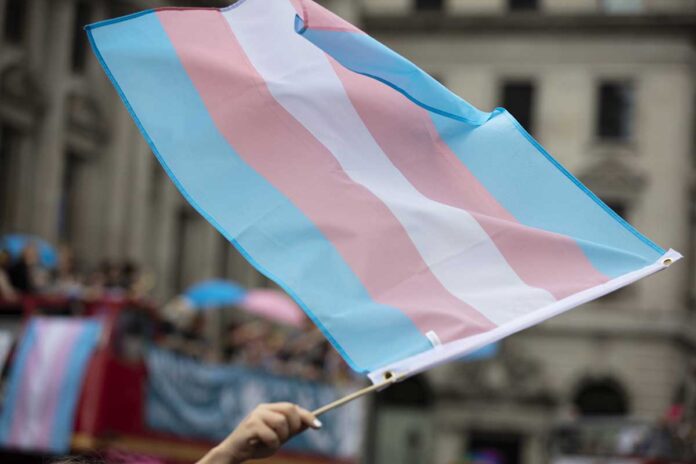The trans community has a long history, but all-too-often, that history is buried, hidden behind the firmest of closet doors, and under threat of being forever lost.
Certainly, this is no truer than when Nazi Party members burned the books from Magnus Hirschfeld’s Institut für Sexualwissenschaft in Berlin 90 years ago this year. 25000 tomes burned that day and, setting back LGBTQ+ knowledge by decades.
Yet, today, I want to talk about the history we ourselves hide.
I recently had the good fortune of watching Casa Susanna, a documentary available via the Public Broadcasting System.
Casa Susanna started as the Chevalier D’Eon Resort, a bungalow camp in the Catskills of New York. There, under the tutelage of Susanna and Maria Valenti, crossdressers of the 1950s could spend the weekend as women.
OK, before I go further, I feel the need to step back a bit and clarify both the times and the terms of the era.
This was contemporary with Christine Jorgensen flying home to New York amid headlines about her landmark gender confirmation surgery — not that first such surgery, but certainly the first to capture public acclaim.
Yet it wasn’t an easy road, even with the spotlight on Jorgensen. This was a time prior to Stonewall, Compton’s, the Dewey’s Lunch Counter Sit In, and pretty much anything else in the post-war LGBTQ+ rights movement. Being trans was still a crime in much of the country, and one could quickly find themselves without a job, without families, and touting a criminal record for the crime of wearing attire that didn’t somehow match your legal identity.
What’s more, this was the 1950s. Gender roles were tightly segregated in the US and elsewhere, and crossing those lines was not easy even if it wasn’t considered criminal.
Even with all this in mind, the headlines around Jorgensen started to open the floodgates and many backroom communities of transgender people of all stripes began to spring up. One community was what would become Casa Susanna.
As with many trans-related things of the era, the expectation was that the guests be heterosexual, male-identified cross-dressers. All that said, many of those who went to Casa Susanna — including Susanna Valenti — would later live their lives as women, and seek gender affirming care.
This was an era when you simply faded away, and both Casa Susanna and those who frequented wandered away — and with it, that history of the place and its time.
The Casa Susanna documentary includes several interviews, including with two past attendees, Katherine and Diana, as well as two of the children of other attendees, Betsy and Gregory. They tell the history of this place, illustrated by photos of the place and the people who spent those weekends in the Catskills, as well as some other brilliant period clips.
As fascinating as the tales shared by Katherine and Diana are — both about their time at Casa Susanna as well as their later years as they both transitioned — it was Gregory and Betsy that had some of the stronger parts of the narrative.
Gregory was the grandchild to Susanna and Maria, who founded the resort. He tells loving stories of his grandparents, of sneaking peeks at the shows the attendees would put on, and of both Susanna and Maria in their later years.
Betsy was the daughter of one other attendee. Her story, in contrast to the others, is bitter. Her father was distant, and often cruel. Unlike Katherine, Diana, or Susanna, her father did not transition in the years following Casa Susanna. According to her, it feels like he was a very different person up in the Catskills, not the person she knew.
It is a bittersweet part of the story, one that leaves me wondering what if the times had been different, and her father had the freedom to be himself elsewhere, outside of Casa Susanna and in a world so unlike the strait-laced, deeply divided 1950s.
When I first came out, I met a few contemporaries of Casa Susanna, including Virginia Prince, who had been a guest at Casa Susanna, and founded an international organization for crossdressers.
By the time I came on the scene in the early 1990s, Casa Susanna had long since faded into obscurity. My local trans support group, a slightly more permissive offshoot of Prince’s crossdresser sorority, was nevertheless the sort of place where you entered the meetings via the back entrance of a Holiday Inn, and largely avoided acknowledging members outside of the safety of the meetings. While it was no longer illegal to be trans in most places, no one was still willing to take many risks.
Being trans when I was coming out wasn’t still commonplace, but it was still a bit better known. You still risked your job, your family, and your life, but this had freed up some. Certainly, more than the 1950s. I was far more of a firebrand, and wanted to see more change — so the thinking of this old group, who preferred a much more cautious approach, rankled me. The generational divide was clear.
Today, the era I came out in, those early 1990s, is nearly as far ago as Casa Susanna was to back then. I am sure I live my own generational divide, as the trans community has both grown in public acceptance, yet faces a political backlash that threatens to take us all back to that era, if not beyond.
I can only hope, as my own era ages out of this world, that we have left our own histories more present and visible than our forebears.
Gwen Smith once again recommends the Louise Lawrence Transgender Archive. You’ll find her at www.gwensmith.com.
